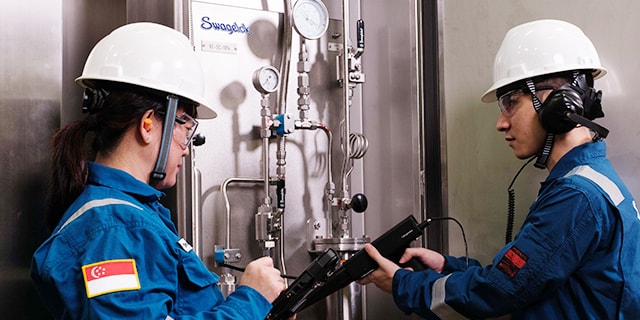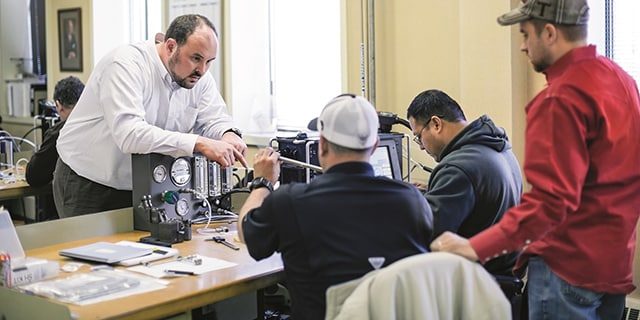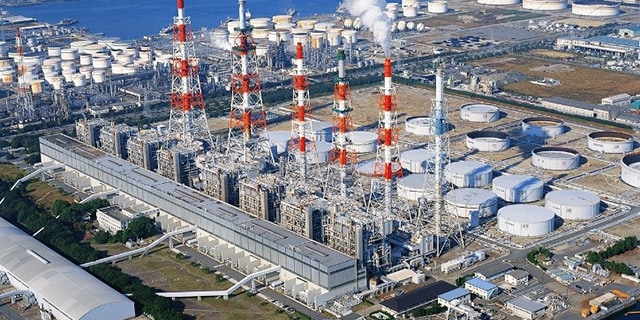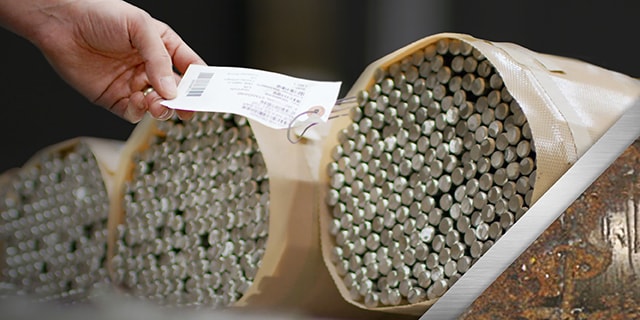Ways Training and Advisory Services Can Help You Bridge the Skills Gap

Four Ways Training and Advisory Services Can Help You Bridge the Skills Gap
Brian Van Valkenburg, Training & Services Marketing Manager
Imagine your organization is commissioning a new critical fluid or sampling system. This undertaking requires a significant investment no matter the industry and, of course, the right skills and knowledge to come up with a safe and efficient design to specify the right componentry and to properly install all tubes, fittings, and hoses that make up the new system.
Now ask yourself, do you have the right expertise in-house to make those crucial design and specification decisions? Do you have the practical experience to install every component properly? The application knowledge to ensure all parts are contributing to representative samples and quality product?
If you are hesitant to answer “yes,” you are not alone. Manufacturers in all industries are facing a widening skills gap; recent research suggests as many as 2.4 million manufacturing jobs will go unfilled between 2018 and 2028. Meanwhile, that same research suggests as many as 2.7 million vacancies will be created as current, skilled older workers retire.
None of which mean demand will slow down—and that means organizations and fluid system operators need real solutions to arm their teams with the skills and knowledge to deliver for customers.
The good news is that bridging the knowledge gap is possible with available industry resources and training opportunities. Here are four key areas organizations can look to target.
#1. Fluid System Installation.
Proper technique for joining tubes and fittings, among other common fluid system connections, is something that many professional technicians have come by after years of experience. What happens when decades of practical expertise and real-world experience walk out the door to retirement?
As older generations retire and replacement of that labor becomes a bit more challenging, organizations should be working to arm their highest-value employees with the fundamental skills they will need to maintain and assemble reliable, efficient, and safe fluid systems. Any technician performing work on a fluid system should be equipped with essential skills involving tube bending and fitting assembly, along with hose, valve, and regulator selection and troubleshooting. For example, are your technicians performing proper tube preparation for every installation? Available tube and fitting training courses that cover the fundamentals can be invaluable to the ongoing success and safety of fluid system operators.
#2. Materials Selection.
Corrosion inevitably impacts fluid systems. Fortunately, there are upfront materials selection choices to be made that can prevent corrosion and related issues before they become a serious or ongoing problem for your fluid system.
How your system fluid interacts with the steel fittings and tubing that make up your fluid system is important. Your technicians and engineers should be able to select and specify corrosion-resistant alloys for the improved performance, safety, and efficiency of your system. This is particularly important in the oil and gas market, as new platforms are being commissioned at greater depths and farther offshore—where things like sour gas leaks or other serious system failures can potentially have severe consequences.
Are your teams armed with robust materials science knowledge? Did a seasoned engineer recently retire taking his or her robust materials science expertise with them? Taking advantage of a materials science training course can help bridge the gap, enabling teams to learn how specific alloys resist corrosion, how materials behave, and how industry standards impact material choices.
#3. Application Solutions.
A skilled labor gap is a dual threat—both knowledge and manpower may be lacking inside the plant. Consider an example: your grab sampling system. This is an intricate, important fluid system assembly that requires both time and expertise to build and calibrate correctly, helping to obtain accurate, representative samples. End-product quality depends on it. But if you are facing a skilled labor shortage, a knowledgeable technician or engineer might already be stretched thin. In-house technical instrumentation resources may not even be a luxury you have at your disposal.
Outsourcing some common, but critical, fabrication and assembly work can be one way for fluid system operators to focus on maximizing the value of the end product. Some available options can meet both needs at once, providing a fully designed and assembled application solution that your teams do not need to spend extra time putting together. They can also help eliminate any variability, helping you be certain your application is designed to meet your specific needs.
#4. Overall System Optimization.
When teams are stretched thin, it is important to prioritize. But how can you be certain all the little things are going smoothly too?
Consider the necessity of identifying and fixing leaks throughout the plant. Every hiss of costly gas escaping from lines or steam leaking from end connections reduces profitability and increases maintenance costs. It may not be feasible, however, to address every leak in your plant at once. Especially if resources are sparse, you might be following a strict prioritization schedule. You might not even be aware of every leak occurring.
How can you be sure your entire system is operating safely, efficiently, and is resulting in high-quality products for your customers? Think about bringing in a third party for extra help and a fresh set of eyes. By bringing technical experts into your facility to help identify areas of potential improvement, you can boost total system performance, safety, and productivity while reducing costs and environmental issues.
Look for evaluators that are independent, that will only recommend fixes that are necessary to improve system performance. Additionally, any good evaluation service will provide a detailed report after inspection, helping you identify and prioritize areas of improvement based on your specific challenges.
Related Articles

Closing the Manufacturing Skills Gap: Develop a Well-Trained Team
With an aging industrial workforce nearing retirement, manufacturers are turning to younger generations to replace expert knowledge. Learn how to build an effective fluid system training program with expert advice from Swagelok.

Refinery Safety Depends on Well-Trained, Empowered Employees
Fugitive emissions of hazardous gases can occur in refineries. Safe, leak-free containment depends on knowledgeable and empowered teams.

Material Matters: Selecting the Right Material for Corrosion Resistance
An offshore platform can have nearly 50,000 feet of tubing, more than 20,000 fluid system components, no fewer than 10,000 fittings, and as many as 8,000 mechanical connections. No wonder choosing corrosion-resistant material isn’t easy. Learn how to make choices right for your application.

